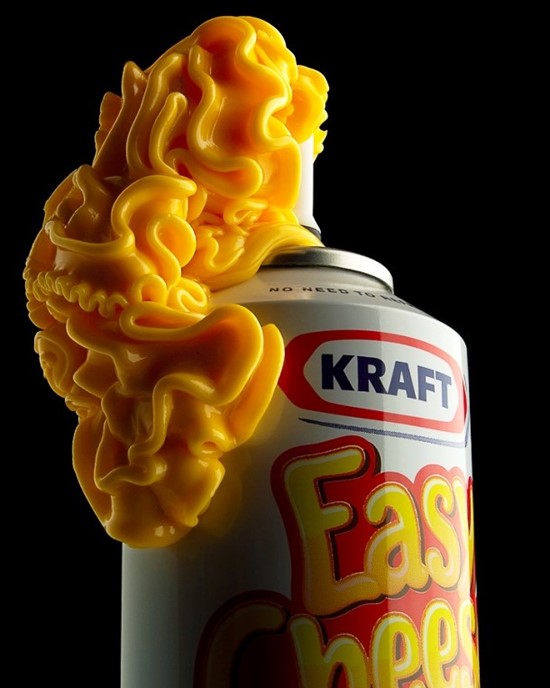
To this day, in the aisles of supermarkets around the world, you can see in Cheese Whiz and Reddi-Whip relics of a bygone golden era of food in spray cans. For this is what the future was meant to be like according to Nadia Berenstein:
Imagine a multi-course dinner materializing from a series of aerosol canisters. Elegant canapés crowned with gobbets of liverwurst and cheese-spread, sprayed from a can. A pair of self-heating cans deliver the main course: a cloud of fluffy mashed potatoes alongside a slurry of barbecued meat, finished off with a misting of hickory flavor “for a gourmet touch.” For dessert, how about a spray-on sundae? Ice cream, banana whip, chocolate sauce, maraschino topping—just push and go.
What happened? She explained:
- Inspired by the success, after World War 2, of whipped cream in a can, food manufacturers looked to push the boundaries of meals that could be aerosolized.
- Ideas that made it to market included: spray-on martini, spray-on barbeque sauce, spray-on coffee, and spray-on cake batter.
- Food engineers believed that such innovation would go as far as space, giving astronauts an easy way to consume a variety of foods.
- But while manufacturers loved the idea, families were less enthused about giving children food in cans that could be sprayed all over furniture.
- The marginal amount of convenience that food in spray-cans offered, also didn’t quite justify the added cost of buying gas-pressurized foods.
- And for many there was a lingering unappetizing link between aerosol cans and hygiene products like hair sprays and deodorants.
- The final nail in the coffin for spray-on meals though, was a shift in societal preferences for more natural, less proceed foods.
Read more about some of the early engineering challenges that spray-can food manufacturers overcame, and the possibility of a spray-on renaissance in the years ahead, over here.
Source: Lucky Peach










Join the Discussion! (No Signup Required)